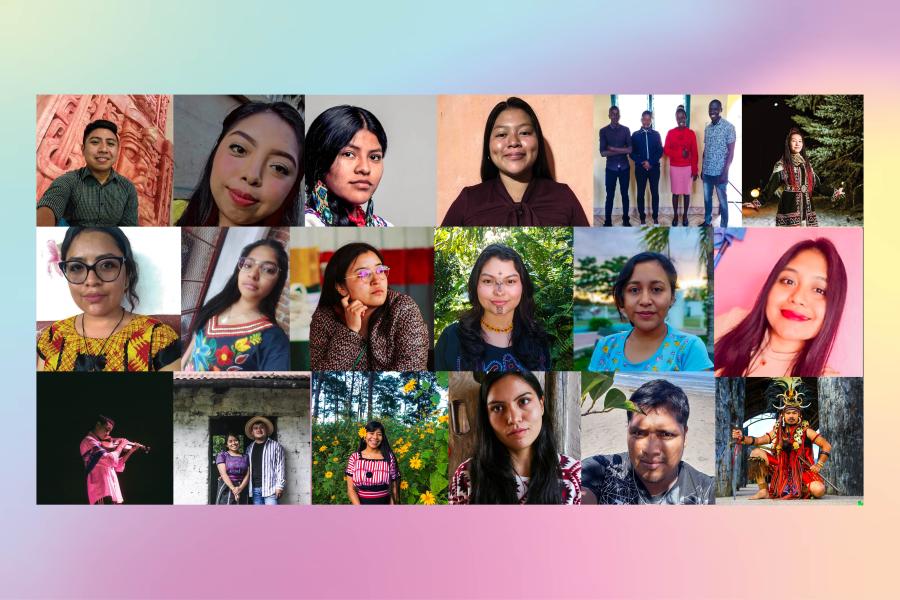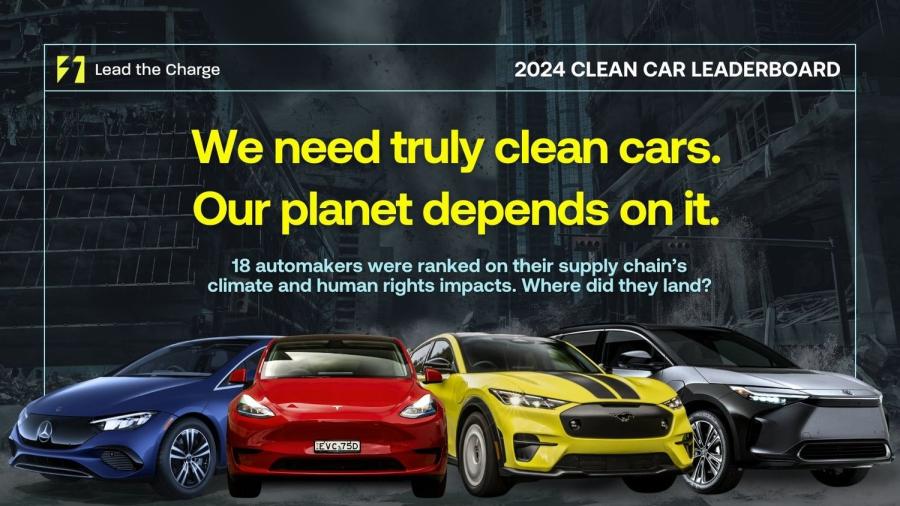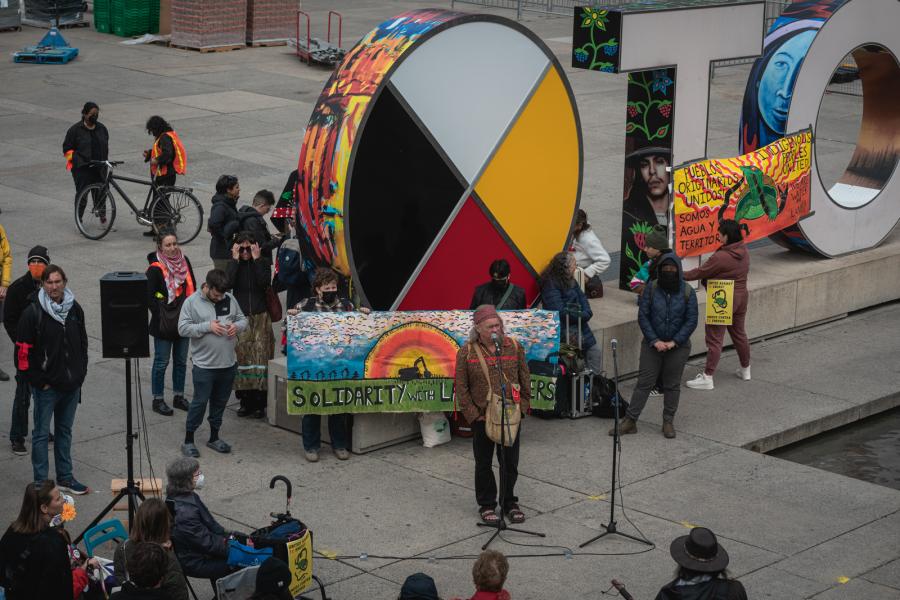There are more than 300 million indigenous people, in virtually every region of the world, including the Sámi peoples of Scandinavia, the Maya of Guatemala, numerous tribal groups in the Amazonian rainforest, the Dalits in the mountains of Southern India, the San and Kwei of Southern Africa, Aboriginal people in Australia, and, of course the hundreds of Indigenous Peoples in Mexico, Central and South America, as well as here in what is now known as North America.
There is enormous diversity among communities of Indigenous Peoples, each of which has its own distinct culture, language, history, and unique way of life. Despite these differences, Indigenous Peoples across the globe share some common values derived in part from an understanding that their lives are part of and inseparable from the natural world.
Onondaga Faith Keeper Oren Lyons once said, “Our knowledge is profound and comes from living in one place for untold generations. It comes from watching the sun rise in the east and set in the west from the same place over great sections of time. We are as familiar with the lands, rivers, and great seas that surround us as we are with the faces of our mothers. Indeed, we call the earth Etenoha, our mother from whence all life springs.”
Indigenous people are not the only people who understand the interconnectedness of all living things. There are many thousands of people from different ethnic groups who care deeply about the environment and fight every day to protect the earth. The difference is that indigenous people have the benefit of being regularly reminded of their responsibilities to the land by stories and ceremonies. They remain close to the land, not only in the way they live, but in their hearts and in the way they view the world. Protecting the environment is not an intellectual exercise; it is a sacred duty. When women like Pauline Whitesinger, an elder at Big Mountain, and Carrie Dann, a Western Shoshone land rights activist, speak of preserving the land for future generations, they are not just talking about future generations of humans. They are talking about future generations of plants, animals, water, and all living things. Pauline and Carrie understand the relative insignificance of human beings in the totality of the planet.
Aside from a different view of their relationship to the natural world, many of the world’s Indigenous Peoples also share a fragmented but still-present sense of responsibility for one another. Cooperation always has been necessary for the survival of tribal people, and even today cooperation takes precedence over competition in more traditional communities. It is really quite miraculous that a sense of sharing and reciprocity continues into the 21st century given the staggering amount of adversity Indigenous Peoples have faced. In many communities, the most respected people are not those who have amassed great material wealth or achieved great personal success. The greatest respect is reserved for those who help other people, those who understand that their lives play themselves out within a set of reciprocal relationships.
There is evidence of this sense of reciprocity in Cherokee communities. My husband, Charlie Soap, leads a widespread self-help movement among the Cherokee in which low-income volunteers work together to build walking trails, community centers, sports complexes, water lines, and houses. The self-help movement taps into the traditional Cherokee value of cooperation for the sake of the common good. The projects also build a sense of self-efficacy among the people.
Besides values, the world’s Indigenous Peoples are also bound by the common experience of being “discovered” and subjected to colonial expansion into their territories that has led to the loss of an incalculable number of lives and millions and millions of acres of land and resources. The most basic rights of Indigenous Peoples were disregarded, and they were subjected to a series of policies that were designed to dispossess them of their land and resources and assimilate them into colonial society and culture. Too often the policies resulted in poverty, high infant mortality, rampant unemployment, and substance abuse, with all its attendant problems.
The stories are shockingly similar all over the world. When I read Chinua Achebe’s Things Fall Apart, which chronicled the systematic destruction of an African tribe’s social, cultural, and economic structure, it sounded all too familiar: take the land, discredit the leaders, ridicule the traditional healers, and send the children off to distant boarding schools.
And I was sickened by the Stolen Generation report about Aboriginal children in Australia who were forcibly removed from their families and placed in boarding schools far away from their families and communities. My own father and my Aunt Sally were taken from my grandfather by the U.S. government and placed in a government boarding school when they were very young. There is a connection between us. Indigenous Peoples everywhere are connected both by our values and by our oppression.
When contemplating the contemporary challenges and problems faced by Indigenous Peoples worldwide, it is important to remember that the roots of many social, economic, and political problems can be found in colonial policies. And these policies continue today across the globe.
Several years ago Charlie and I visited an indigenous community along the Rio Negro in the Brazilian rainforest. Some of the leaders expressed concern that some environmentalists, who should be natural allies, focus almost exclusively on the land and appear not to see or hear the people at all. One leader pointed out that a few years ago it was popular for famous musicians to wear T-shirts emblazoned with the slogan “Save the Rainforests,” but no one ever wore a T-shirt with the slogan “Save the People of the Rainforest,” though the people of the forest possess the best knowledge about how to live with and sustain the forests.
With so little accurate information about Indigenous Peoples available in educational institutions, in literature, films, or popular culture, it is not surprising that many people are not even conscious of Indigenous Peoples.
The battle to protect the human and land rights of Indigenous Peoples is made immeasurably more difficult by the fact that so few people know much about either the history or contemporary lives of our people. And without any kind of history or cultural context, it is almost impossible for outsiders to understand the issues and challenges faced by Indigenous Peoples.
This lack of accurate information leaves a void that is often filled with nonsensical stereotypes, which either vilify Indigenous Peoples as troubled descendants of savage peoples, or romanticize them as innocent children of nature, spiritual but incapable of higher thought.
Public perceptions will change in the future as indigenous leaders more fully understand that there is a direct link between public perception and public policies. Indigenous Peoples must frame their own issues, because if they don’t frame the issues for themselves, their opponents most certainly will. In the future, as more indigenous people become filmmakers, writers, historians, museum curators, and journalists, they will be able to use a dazzling array of technological tools to tell their own stories, in their own voice, in their own way.
Once, a journalist asked me whether people in the United States had trouble accepting the government of the Cherokee Nation during my tenure as principal chief. I was a little surprised by the question. The government of the Cherokee Nation predated the government of the United States and had treaties with other countries before it executed a treaty with one of the first U.S. colonies.
Cherokee and other tribal leaders sent delegations to meet with the English, Spanish, and French in an effort to protect their lands and people. Traveling to foreign lands with a trusted interpreter, tribal ambassadors took maps that had been painstakingly drawn by hand to show their lands to heads of other governments. They also took along gifts, letters, and proclamations. Though tribal leaders thought they were being dealt with as heads of state and as equals, historical records indicate they were often objects of curiosity, and that there was a great deal of disdain and ridicule of these earnest delegates.
Tribal governments in the United States today exercise a range of sovereign rights. Many tribal governments have their own judicial systems, operate their own police force, run their own schools, administer their own clinics and hospitals, and operate a wide range of business enterprises. There are now more than two dozen tribally controlled community colleges. All these advancements benefit everyone in the community, not just tribal people. The history, contemporary lives, and future of tribal governments is intertwined with that of their neighbors.
One of the most common misperceptions about Indigenous Peoples is that they are all the same. There is not only great diversity among Indigenous Peoples, there is great diversity within each tribal community, just as there is in the larger society. Members of the Cherokee Nation are socially, economically, and culturally stratified. Several thousand Cherokee continue to speak the Cherokee language and live in Cherokee communities in rural northeastern Oklahoma. At the other end of the spectrum, there are enrolled tribal members who have never been to even visit the Cherokee Nation. Intermarriage has created an enrolled Cherokee membership that includes people with Hispanic, Asian, Caucasian, and African American heritage.
So what does the future hold for Indigenous Peoples across the globe? What challenges will they face moving further into the 21st century?
To see the future, one needs only to look at the past. If, as peoples, we have been able to survive a staggering loss of land, of rights, of resources, of lives, and we are still standing in the early 21st century, how can I not be optimistic that we will survive whatever challenges lie ahead, that 100 or 500 years from now we will still have viable indigenous communities? Without question, the combined efforts of government and various religious groups to eradicate traditional knowledge systems has had a profoundly negative impact on the culture as well as the social and economic systems of Indigenous Peoples. But if we have been able to hold onto our sense of community, our languages, culture, and ceremonies, despite everything, how can I not be optimistic about the future?
And though some of our original languages, medicines, and ceremonies have been irretrievably lost, the ceremonial fires of many Indigenous Peoples across the globe have survived all the upheaval. Sometimes indigenous communities have almost had to reinvent themselves as a people but they have never given up their sense of responsibility to one another and to the land. It is this sense of interdependence that has sustained tribal people thus far and I believe it will help sustain them well into the future.
Indigenous Peoples know about change and have proven time and time again they can adapt to change. No matter where they go in the world, they hold onto a strong sense of tribal identity while fully interacting with and participating in the larger society around them. In my state of Oklahoma alone, we have produced an indigenous astronaut, two
United States congressmen, a Pulitzer Prize-winning novelist, and countless others who have made great contributions to their people, the state, and the world.
One of the great challenges for Indigenous Peoples in the 21st century will be to develop practical models to capture, maintain, and pass on traditional knowledge systems and values to future generations. Nothing can replace the sense of continuity that a genuine understanding of traditional tribal knowledge brings. Many communities are working on discrete aspects of culture, such as language or medicine, but it is the entire system of knowledge that needs to be maintained, not just for Indigenous Peoples but for the world at large.
Regrettably, in the future the battle for human and land rights will continue. But the future does look somewhat better for tribal people. Last year, after 30 years of advocacy by Indigenous Peoples, the United Nations finally passed a declaration supporting their distinct human rights. The challenge will be to make sure the provisions of the declaration are honored and that the rights of Indigenous Peoples all over the world are protected.
Indigenous Peoples simply do better when they have control of their own lives. In the case of my own people, after we were forcibly removed by the United States military from the southeastern part of the United States to Indian Territory, now Oklahoma, we picked ourselves up and rebuilt our nation, despite the fact that approximately 4,000 Cherokee lives were lost during the forced removal. We started some of the first schools west of the Mississippi, Indian or non-Indian, and built schools for the higher education of women. We printed our own newspapers in Cherokee and English and were more literate than our neighbors in adjoining states. Then, in the early 20th century, the federal government almost abolished the Cherokee Nation, and within two decades, our educational attainment levels dropped dramatically and many of our people were living without the most basic amenities. But our people never gave up the dream of rebuilding the Cherokee Nation. In my grandfather’s time, Cherokee men rode horses from house to house to collect dimes in a mason jar so they could send representatives to Washington to remind the government to honor its treaties with the Cherokee people.
Over the past 35 years, we have revitalized the Cherokee Nation and once again run our own school, and we have an extensive array of successful education programs. The youth at our Sequoyah High School recently won the state trigonometry contest, and several are Gates Millennium Scholars. We simply do better when we have control over our own destiny.
Wilma Mankiller was the first female principal chief of the Cherokee Nation. This article is adapted from a talk she gave in October 2008 at Quinnipiac University to celebrate the 60th anniversary of the Universal Declaration of Human Rights.



